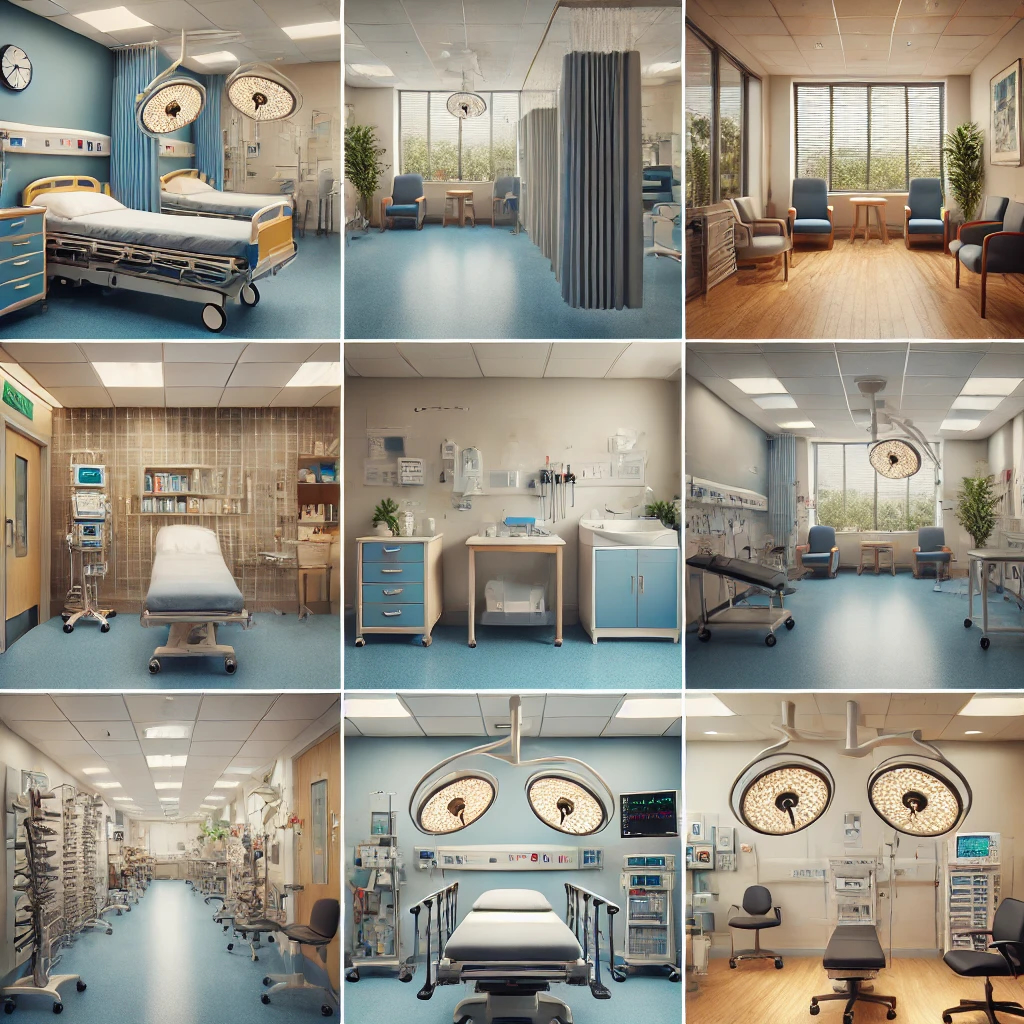6 Work photo gallery

The idea behind this activity is to bring to the surface taken-for-granted features of your local environment and reflect on how these shape your practice and how it might be otherwise.
Method
- When you are next in work, spend some time paying attention to your clinical environment. Try to notice the things that you normally take for granted: the décor, fixtures and fittings, appliances, building materials (vinyl floors, ceiling tiles, etc.), pot plants, medical equipment, noticeboards, beds and chairs, etc.
- When you then have time, open an image search tool (Google images, Bing images, etc.) and search for images of clinical environments that are just like yours.
- Download between five and 10 images that, together, form a montage of your clinical workspace.
- Open a new PowerPoint or Keynote file and create a presentation with a blank slide. Insert into the slide the images you’ve collected and arrange them so that they can be clearly seen together.
- Use the presenters notes for your analysis.
Prompts (don’t start this until you’ve compiled your work photo gallery)
- First of all, in a few sentences describe what you see as the key features of clinical practice that you’ve tried to capture in your work photo gallery.
- Now try to explain what it is about those features that you feel is significant. If, let’s say, you include a picture of treatment bed in the middle of a clinic room, explain why it is that this is significant. Consider why it’s significant that this kind of bed is used, and why it’s located exactly where it is and not, say, up against the wall.
- Try not to assume anything. Try to take a naïve view of what you’re seeing. Imagine what a friend might point out if they knew nothing about your workplace or the things that surround you.
- Choose one element within the images that represents something unusual and surprising to you. The more mundane the better. It might be the colour of the walls; the lack of natural light or comfortable chairs … but think about why this element is so accepted as normal by you.
- Try to think what’s good about this element functioning in this way, and what’s problematic about it.
- Think how the use of the space might change if this element was disrupted by you and replaced by something better. What might be better?

